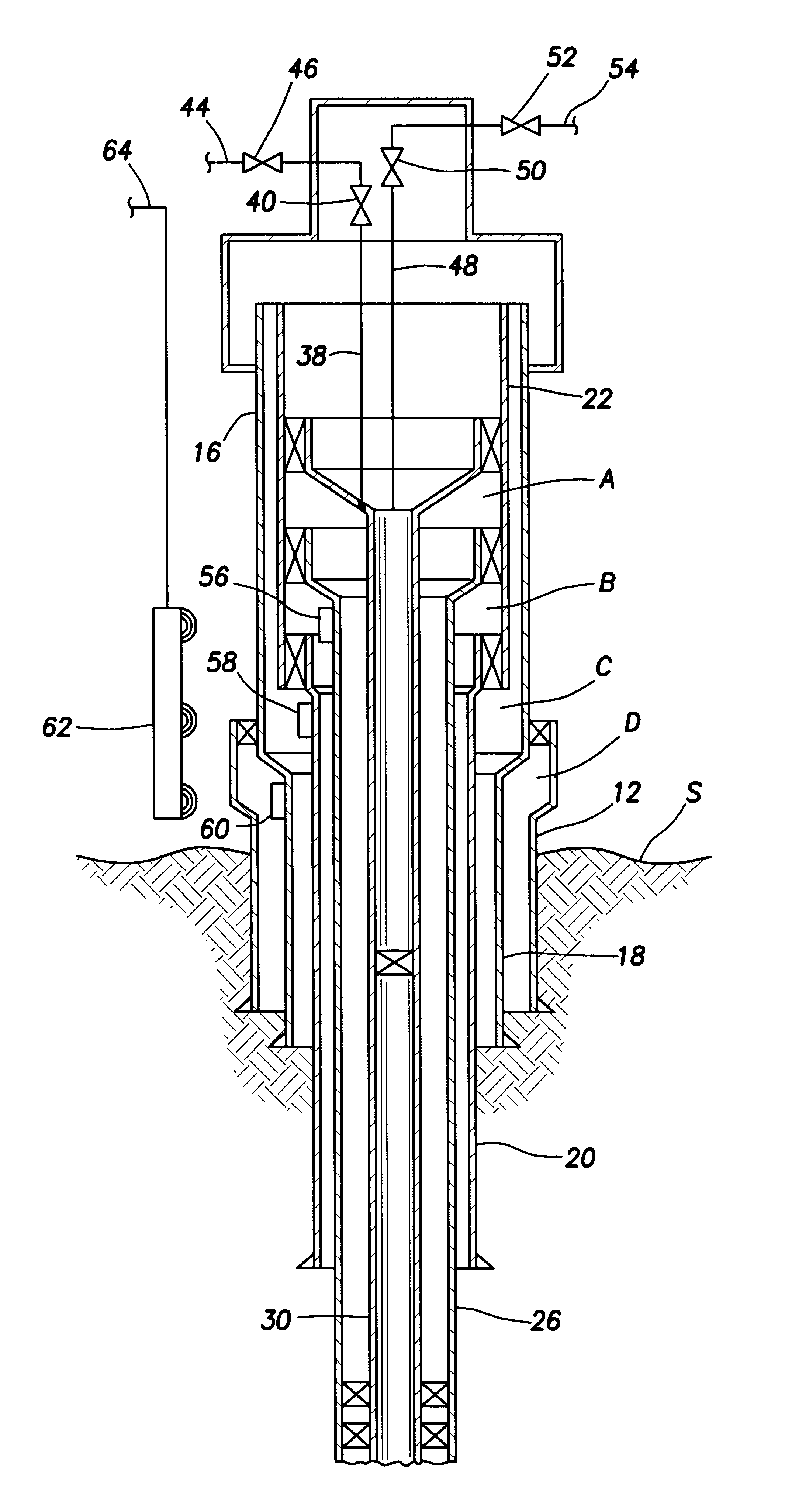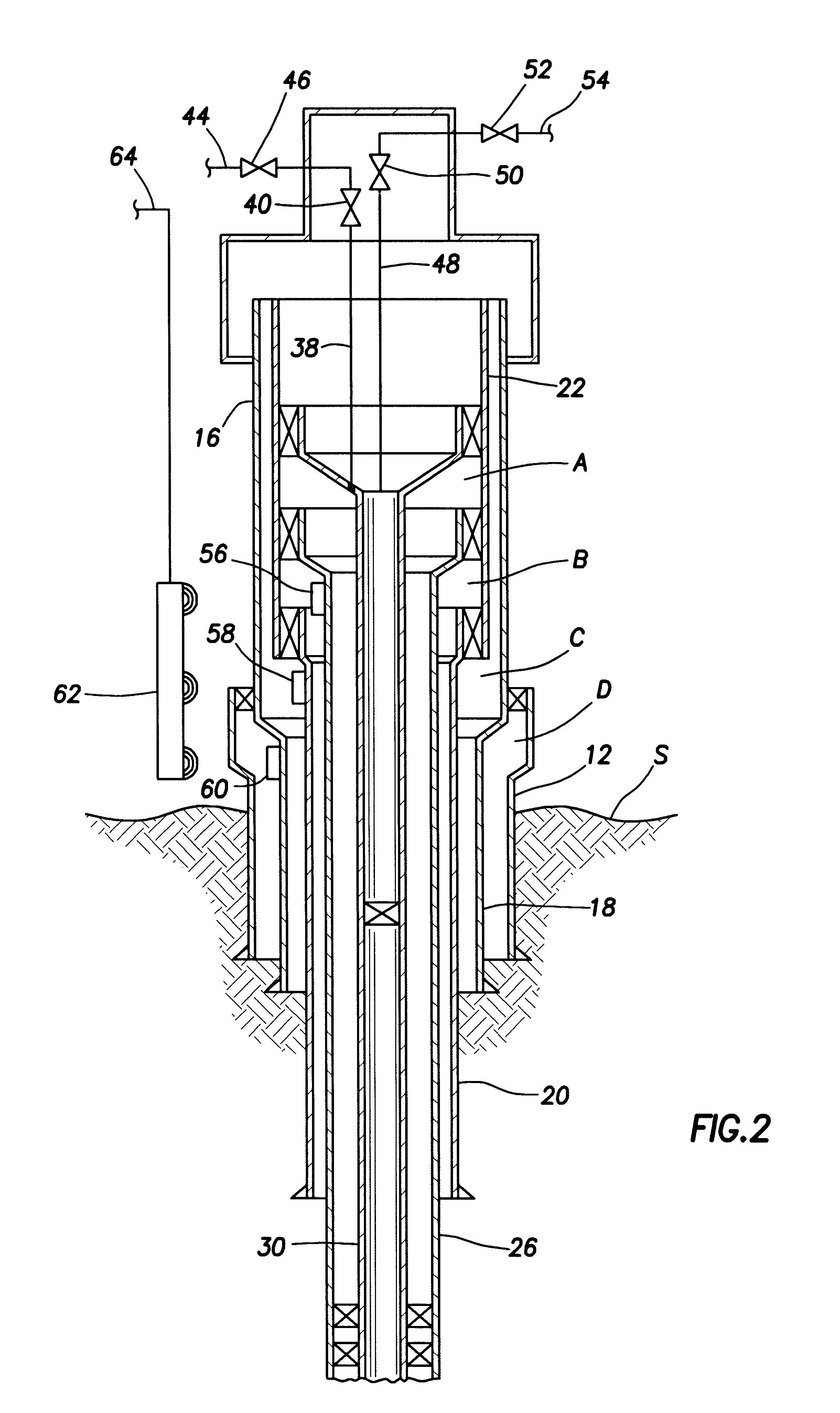Non-intrusive pressure measurement device for subsea well casing annuli
a pressure measurement device and subsea well technology, applied in the field of wells, can solve the problems of unproven strain gauge method beyond the laboratory stage, difficult detection of body penetration connection, and higher overall safety of wells
- Summary
- Abstract
- Description
- Claims
- Application Information
AI Technical Summary
Benefits of technology
Problems solved by technology
Method used
Image
Examples
Embodiment Construction
FIG. 1 of the Drawings schematically illustrate a wellhead having multiple annuli and showing a conventional system representing the prior art for detecting pressure conditions within the production tubing outlet at the tubing hangar and detecting pressure conditions within annulus "A". The pressure measurement system of FIG. 1 is of non-intrusive nature but it does not have the capability for measuring the pressure of other annuli.
FIG. 2 of the Drawings illustrates a non-intrusive pressure monitoring system for well casing annuli, representing the preferred embodiment of the present invention that consists of intelligent pressure sensors mounted on the casing hangers and / or casing strings and a means to remotely interrogate those sensors. The interrogation device may be located external to the wellhead or may be located internal to the wellhead on or within the completion tubing hanger or tubing string. The invention does not require any penetrations through the high or low pressur...
PUM
 Login to View More
Login to View More Abstract
Description
Claims
Application Information
 Login to View More
Login to View More - R&D
- Intellectual Property
- Life Sciences
- Materials
- Tech Scout
- Unparalleled Data Quality
- Higher Quality Content
- 60% Fewer Hallucinations
Browse by: Latest US Patents, China's latest patents, Technical Efficacy Thesaurus, Application Domain, Technology Topic, Popular Technical Reports.
© 2025 PatSnap. All rights reserved.Legal|Privacy policy|Modern Slavery Act Transparency Statement|Sitemap|About US| Contact US: help@patsnap.com



